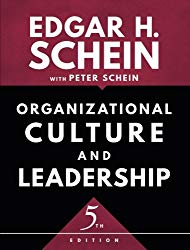Recommended Resources
Read more about Edgar Schein’s definition of organizational culture

Buy Ed’s book Organizational Culture & Leadership on Amazon. (This is an affiliate link. I get a small percentage for the referral — too small, in fact, to influence my recommendation! I recommend resources because I think they can help you.)
What Exactly Is Organizational Culture, Anyway?
My client was the leader of a small company that had won some new contracts and was set to expand big time—from 20 people to 200 within a year or two. He wanted help with reorganizing his expanding staff into cross-functional teams.
I asked him, “When you think about the culture of your company, what do you want?”
“Well, I guess that depends on what you mean by culture,” he responded.
So let’s start there. To know what kind of culture you want to create, first you need a working definition of culture.
One dictionary definition goes like this:
(1a) the customary beliefs, social forms, and material traits of a racial, religious, or social group
(1b) the set of shared attitudes, values, goals, and practices that characterize an institution or organization [Merriam-Webster]
Definition 1a comes first because it’s most common. The one closest to what we mean is Definition 1b. Organizational culture is shared. It consists of intangibles like values and goals. It is woven into the fabric of the organization.
One of the giants upon whose shoulders I stand in Creating Culture on Purpose is Edgar Schein. Ed is generally credited with coining the term “organizational culture.” His book Organizational Culture and Leadership (Amazon affiliate link) is the foundational textbook on the topic.
Part of Ed’s definition goes like this:
A pattern of shared basic assumptions learned by a group as it solved its problems … a product of joint learning. [#hypertext]
Note that this definition, like the dictionary’s, includes the word shared. Ed’s version adds that this shared set of assumptions doesn’t emerge full blown from the ether, the ocean, or the CEO’s mindset. It evolves as people solve problems together.
I love to swim, so it’s not surprising that my favorite analogy for organizational culture is the pond, lake, or pool (or “chlorine pit,” as the British put it) that we’re all swimming in together at work. As a body of water is a necessary condition for swimming, so organizational culture is a necessary condition for productive work.

The culture is all around us, and we’re immersed in it — from the line worker to the CEO. When the culture is healthy and strong, we don’t really notice it, any more than swimmers notice pristine water. But we recognize a toxic culture almost as easily as we notice cloudy water or mysterious bits of who-knows-what floating past our noses.
Cultures get toxic in at least two ways:
- Individual or group behaviors: People pee (or worse) in the water.
- Neglect: Leaders attend to swimmers’ laps and times but not the pool itself.
Leaders who create culture on purpose attend to both issues to keep their organization strong.
- They foster “a pattern of shared basic assumptions” about how we act in this pool. Part of this pattern is well-defined rules and standards, and part is less-specific but equally powerful group norms. The balance depends on the kind of organization you’re leading. We’ll have lots to say about this balance in future posts.
- They pay attention to the culture. They intentionally nurture the experiences and shared values that keep the whole organization and all the people in it working toward shared goals. How that’s done is the subject of Creating Culture on Purpose.
What you can do today: Start on your vision of your own team culture by writing as many adjectives as you can think of to describe the future state you want to see. Sample words: productive, effective, collaborative, flexible, efficient, creative. Don’t overthink it. Just jot down quick ideas.
Questions for discussion: What’s important to you when you think about creating organizational culture? (Extra credit: What’s your favorite metaphor for how culture works?)

